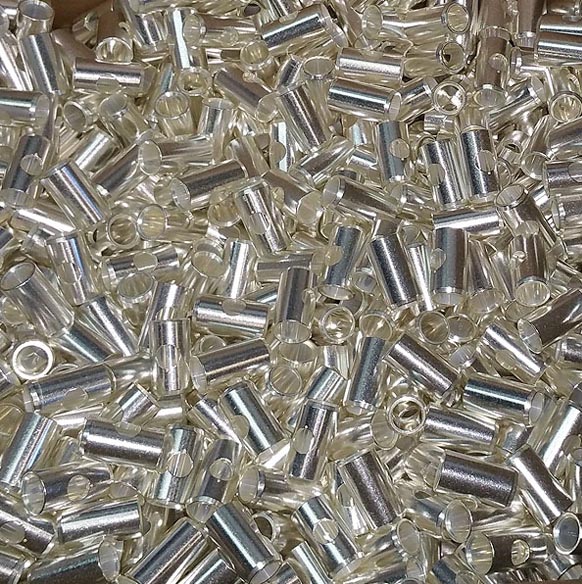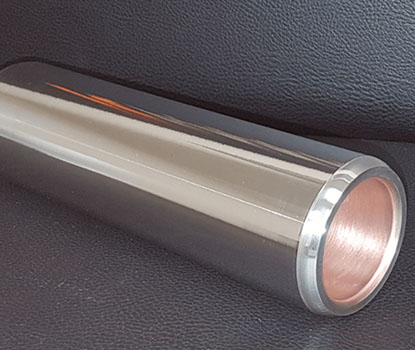Contact Us
B & B Electroplating Co., Inc.
559 Pennsylvania Ave.
Linden, NJ 07036
Phone: (908) 925-5044
Fax: (908) 925-1936
E-mail: info@bbplating.com
Website: www.bbplating.com
Metals Plated & Materials Available

To plate metals with silver, including aluminum, brass, copper, and steel, a process called silver plating is used. Here's a summary of how each metal can be silver plated:
-
Aluminum: Silver plating aluminum is challenging due to poor adhesion. It involves cleaning the aluminum, applying a zincate layer, and then electroplating it with silver.
-
Brass: Brass is suitable for silver plating. The brass surface is cleaned, and the object is immersed in a silver plating bath with an electrical current, allowing silver ions to deposit on the brass.
-
Copper: Copper is an excellent candidate for silver plating. After cleaning, copper is electroplated with silver by immersing it in a silver plating bath with an electric current.
-
Steel: Silver plating steel is more complex due to corrosion susceptibility. It involves cleaning, applying an intermediate layer (usually nickel or copper), and then electroplating with silver.
Proper preparation and intermediate layers are essential for adhesion and durability in silver plating. Contact us today for more information.
Quality Assurance
Our commitment to excellence is demonstrated through various key attributes of our service. We prioritize effective customer service, ensuring that our clients receive the utmost attention and support. Our dedication to quality finishes guarantees that the products we deliver meet the highest standards. We pride ourselves on expeditious lead times, swiftly fulfilling orders to meet your deadlines. Our responsiveness shines through prompt replies to quote requests and offering competitive pricing. Our team is composed of thoroughly trained staff members who provide expert technical support, ensuring that your needs are met with professionalism and expertise.
Plating Types: Which is Best for Your Aluminum or Copper Project?

Each plating type offers distinct benefits when applied to copper or aluminum bus bars:
- Corrosion Resistance: Nickel plating provides excellent corrosion resistance, protecting the bus bars from environmental factors such as moisture and humidity.
- Wear Resistance: It enhances the durability of the bus bars, making them less prone to wear and tear.
- Solderability: Nickel-plated bus bars exhibit good solderability, facilitating the soldering process during assembly.
- Electrical Conductivity: Silver is an excellent conductor of electricity, so silver plating improves the conductivity of the bus bars, reducing electrical resistance and improving performance.
- High Temperature Performance: Silver plating maintains its conductivity even at high temperatures, making it suitable for applications where elevated temperatures are encountered.
- Anti-Tarnish Properties: Silver plating offers resistance to tarnishing, ensuring long-term electrical performance and reliability.
Flash Plating:
- Corrosion Protection: Flash plating, typically consisting of a thin layer of another metal like nickel or silver, provides a quick and economical way to offer some level of corrosion protection to the bus bars.
- Improved Solderability: Flash plating can enhance the solderability of the bus bars, aiding in the soldering process during assembly.
- Solderability: Tin plating facilitates soldering, allowing for secure connections between components.
- Cost-Effectiveness: Tin plating is relatively economical compared to some other plating options, making it a cost-effective choice for bus bar applications.
- Environmental Protection: Tin plating provides a protective barrier against corrosion, extending the lifespan of the bus bars and ensuring reliable performance in various environments.
Each plating type offers specific advantages such as corrosion resistance, conductivity improvement, solderability, and cost-effectiveness, catering to different requirements and applications of copper or aluminum bus bars.
